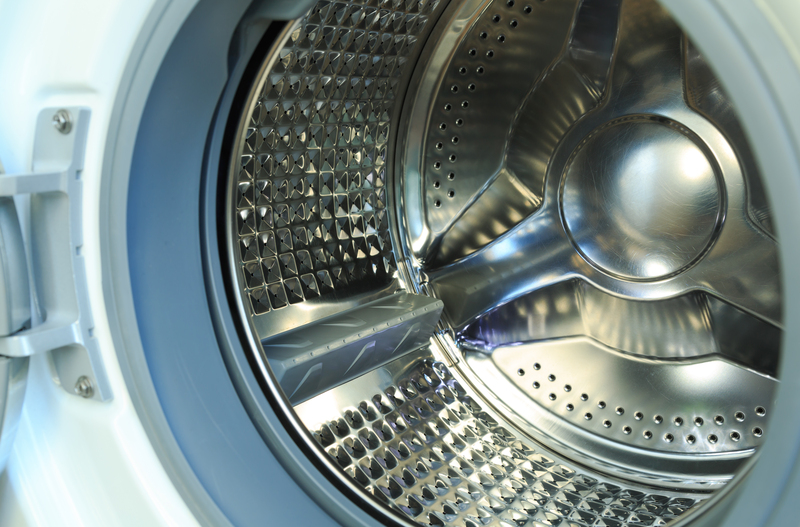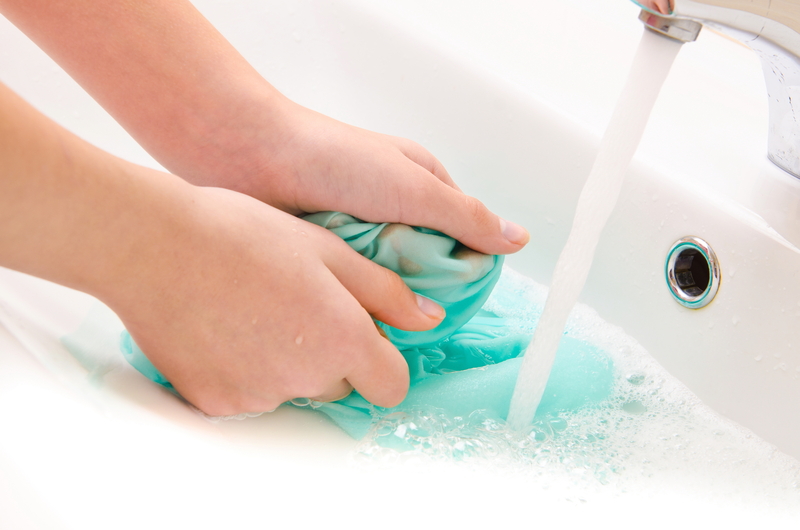Grease-Free Zone: Your Go-To Guide for Enamel Oven Tray Care
Enamel oven trays are a staple in most kitchens, prized for their durability, nonstick properties, and elegant finish. However, to ensure yours remains as good as new, you need to know the right maintenance techniques. Welcome to the grease-free zone: your comprehensive, SEO-optimized resource for enamel oven tray care. From everyday cleaning to deep maintenance and avoiding common pitfalls, this guide has everything you need to keep your trays sparkling and grease-free.
Understanding Enamel Oven Trays: What Makes Them Special?
Enamel oven trays are metal trays coated with a smooth, glass-like enamel layer. This enamel coating provides:
- Nonstick properties: Helps food release easily and reduces the need for excess oils and fats.
- Resistance to corrosion: The enamel acts as a barrier against rust and stains.
- Easy cleaning: Smooth surfaces make removing food residue simple.
- High-heat tolerance: Perfect for baking, roasting, or broiling at high temperatures.
- Aesthetic appeal: Shiny finishes add a touch of class to any kitchen.
These features make enamel baking trays a favorite choice for home cooks and professional chefs alike. To enjoy these benefits for years to come, proper cleaning and care are essential.

Benefits of a Clean, Grease-Free Enamel Oven Tray
Keeping your enamel tray free from grease offers several advantages:
- Improved food taste: Eliminates old, burnt-on grease flavors.
- Better hygiene: Reduces risks of bacterial contamination.
- Longer lifespan: Prevents damage and extends the tray's usability.
- Consistent cooking results: Ensures even heat distribution and prevents sticking.
- Aesthetic cleanliness: Maintains a spotless, attractive kitchen presentation.
Now, let's explore the best tips, tricks, and expert insights for mastering enamel oven tray cleaning.
Routine Maintenance: Everyday Enamel Tray Upkeep
Immediate Post-Use Cleaning
Always clean your tray as soon as possible after use. Once cool, follow these steps:
- Rinse with warm water: Loosens stuck-on residue before it hardens.
- Use mild dish soap: Apply with a non-abrasive sponge or soft cloth.
- Avoid harsh scrubbing: This prevents damaging the enamel surface.
- Rinse and dry thoroughly: Make sure no soap remains, then towel dry to prevent water spots.
Prompt cleaning is key to preventing stubborn stains and grease buildup on the tray's surface.
Between-Use Care
Even if you're not using your enamel oven tray daily, keep it clean by:
- Wiping it down occasionally with a damp cloth to remove dust and debris.
- Storing it in a dry place to avoid moisture buildup, which can lead to rust on uncoated edges.
- Using parchment paper when baking sticky or greasy foods, for easier cleanup and extra protection.
Deep Cleaning: Banishing Burnt-On Grease and Stains
For times when regular washing isn't enough and you're facing stubborn grease stains, follow this deep-cleaning method:
Step-by-Step Deep Cleaning Guide
- Soak the tray: Fill your sink with hot water, adding a generous amount of baking soda and mild dish soap. Allow your tray to soak for at least 30 minutes (up to overnight for severe buildup).
- Scrub gently: After soaking, use a soft sponge or a nylon brush to loosen softened residue. Avoid steel wool or abrasive cleaners, as they can scratch the enamel.
- Attack persistent spots: Mix a paste of baking soda and water, apply to tough stains, let sit for 15 minutes, then scrub gently.
- Finish and rinse: Rinse thoroughly with warm water. Wipe dry immediately.
Alternative Natural Cleaning Solutions
- White vinegar soak: Excellent for cutting through baked-on grease. Combine equal parts of hot water and vinegar, soak, then scrub gently.
- Lemon juice and salt: Sprinkle coarse salt on the tray, squeeze over lemon juice, and use the cut side of the lemon as a scrubber.
Never use bleach or harsh chemicals as they can degrade the enamel, causing pitting and discoloration.
Common Mistakes to Avoid When Cleaning Enamel Oven Trays
- Do not use metal scouring pads: They can scratch or chip the enamel, making it more prone to stains and rust.
- Never shock with cold water immediately after use: Sudden temperature changes can crack or craze the enamel.
- Avoid long-term exposure to acidic foods: Prolonged contact can wear down the enamel layer over time.
- Don't leave trays soaking indefinitely: Water exposure to the tray's edges can cause rust where metal is exposed.
- Don't use your enamel tray on the stovetop: Oven trays are not designed for direct flame or stovetop heating, which can damage the enamel.
Preventative Care Tips for Grease-Free Enamel Tray Cooking
Smart Cooking Habits
- Use liners: Baking paper or silicone mats greatly reduce the need for cleaning and prevent direct grease contact.
- Apply a light layer of oil: If cooking without a liner, a sparing use of oil will help prevent sticking and ease cleaning, while not interfering with the tray's nonstick properties.
- Do not overfill your tray: Spills and overflow can cause stubborn, burnt-on residues.
- Watch the heat: Extremely high temperatures may cause food to burn and stick, making grease much harder to remove.
Regular Inspections
- Check for chips and cracks: If you see bare metal, stop using the tray for acidic or watery foods. Damaged enamel can lead to rust or food contamination.
- Monitor for rust at the edges: While the enamel is inert, uncoated trims may need a dab of food-grade oil to prevent corrosion.
Restoring a Stained or Worn Enamel Oven Tray
Even with the best care, enamel trays might sometimes become stained or dull. Here's how to bring them back to life:
Polishing Away Stains
- Baking soda paste: Spread a mixture of three parts baking soda to one part water over the stained area.
- Let sit for 30 minutes: The paste helps lift discolorations.
- Wipe and rinse: Use a non-abrasive sponge to buff away the stains, then rinse and dry.
Removing Mineral Deposits
If hard water leaves white residue, fill the tray with a mixture of vinegar and water (1:1), heat in the oven at 120?C (250?F) for 15 minutes, allow to cool, then wash and dry as normal.
Storing Your Enamel Oven Tray Properly
- Keep trays dry: Moisture is the enemy of exposed metal edges; always fully dry before storing.
- Stack with care: Place a paper towel or cloth between stacked trays to avoid scratching the enamel.
- Store in a ventilated area: Good airflow prevents moisture buildup and odor development.
Frequently Asked Questions About Enamel Oven Tray Cleaning
Can I put an enamel oven tray in the dishwasher?
Most enamel trays are technically dishwasher-safe, but hand washing is highly recommended to prevent chipping from other utensils and to extend the life of the enamel coating. If using a dishwasher, ensure that the tray isn't touching other items during the cycle.
Is it safe to use commercial oven cleaners on enamel trays?
Many commercial oven cleaners contain harsh chemicals that can damage enamel finishes. If you must use one, check the manufacturer's guidance and always test on a small, inconspicuous spot first.
What should I do if my enamel oven tray is chipped?
If you notice a chip, avoid cooking acidic foods and don't use the tray for messy dishes. Chipped areas can rust or introduce metal flavors into your food. For significant damage, consider replacing the tray.
How do I keep my enamel tray odor-free?
Baking soda is a natural deodorizer. After washing, sprinkle a little over the surface, let it sit for 10 minutes, then rinse and dry.
Choosing the Best Enamel Oven Tray for Easy Grease-Free Maintenance
- Opt for quality: Thicker trays with high-quality enamel coatings resist chips and staining longer.
- Look for reinforced edges: Trays with extra enamel over edges and corners have fewer rust problems.
- Check the manufacturer's care guide: Some trays may have unique cleaning needs.
- Choose reputable brands: These often last longer, saving you money (and cleaning time) in the long run.

Summary: The Essential Enamel Oven Tray Cleaning Routine
- Clean promptly after every use to keep the surface slick and grease-free.
- Sponge with mild soap and avoid anything abrasive.
- Soak and scrub gently for deep cleaning.
- Steer clear of harsh chemicals and metal pads.
- Dry thoroughly and store properly.
By following these simple yet vital steps, you can keep your enamel oven trays grease-free, maximizing their performance and extending their lifespan. Whether baking cookies, roasting vegetables, or whipping up a family feast, your enamel oven tray will remain an indispensable, gleaming part of your kitchen arsenal!
Conclusion: Join the Grease-Free Revolution
Establishing a regular enamel oven tray care routine means more flavorful meals, pristine trays, and fewer cleaning headaches. With a little attention to cleaning strategy and the right preventive habits, you'll always have an oven tray ready for action--without a trace of lingering grease. Enter the grease-free zone today and let your enamel bakeware shine!


